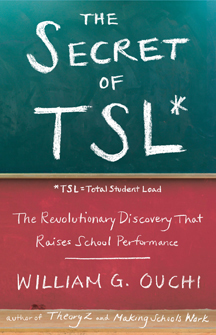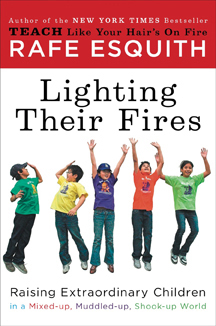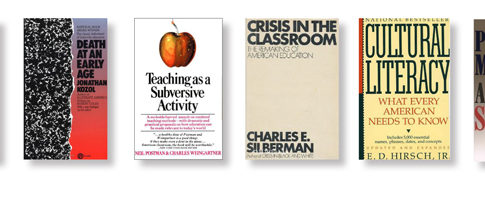 Hope and Despair in the American City: Why there are no bad schools in Raleigh
Hope and Despair in the American City: Why there are no bad schools in Raleigh
By Gerald Grant
Harvard University Press, 2009, $25.95; 226 pages.
Syracuse, New York, does not appear in the title of this book, as Raleigh, North Carolina, does, but its experience is the reason for it. Author Gerald Grant was born in Syracuse and educated through high school there. He lived for years in Washington, where he became education reporter for the Washington Post, and in the Boston area, where he gained a doctoral degree at the Harvard Graduate School of Education and worked with Daniel P. Moynihan, David Riesman, and the writer of this review. Grant returned to Syracuse in the 1970s to become a professor at Syracuse University. He has lived through and experienced, as observer, analyst, and deeply involved citizen, the decline of Syracuse similar to the slide experienced by northeastern and midwestern industrial cities in the last half century. One part of the story of that decline and the brave attempts at reversal and recovery has been told in his excellent 1988 book, The World We Created at Hamilton High. The canvas is greatly extended in this volume.
The story of Syracuse is familiar: misguided attempts at urban renewal in the 1960s, destruction of old neighborhoods by interstate highways penetrating the city center, expansion of suburbs facilitated by federally funded highways and tax benefits for new housing; movement of many industrial facilities to the South; and redlining of old city neighborhoods so they could not get necessary mortgages and insurance for home purchase, rehabilitation, and maintenance. The resulting separation between white suburbs with new schools and middle-class students and an increasingly minority central city are all vividly recounted by Grant, who with his wife was deeply involved in efforts to counter the decline, and who in one neighborhood had some success in doing so. But in the end, there remains an ailing minority-dominated school system in Syracuse in which fewer than 3 of 10 8th graders pass state tests in reading and math.
And then there is Raleigh, where more than 8 of 10 pass, and the visiting researcher is told—and it seems true—“there are no bad schools in Raleigh.” (State requirements, of course, do vary widely, and North Carolina’s are among the least rigorous, but even so the differences between the two cities are huge.) One of the first schools Grant visited in Raleigh, in the historic black district, serves a student population that is majority black with one-third of children from low-income families. The school nevertheless “attracted whites from across the county to its [magnet] programs in art and science. In 3rd grade 94 percent of white children and 79 percent of blacks passed the state math test. By 5th grade 100 percent of both blacks and whites passed the test.” There are very few such public schools in northeastern and midwestern cities of similar size. And if there are, they are generally in rapid transition to becoming all-black. There may be the occasional KIPP or charter school that is predominantly minority and scores high. But Grant is describing a traditional public school, and all Wake County public schools seem to be similar in achievement and attractiveness.
“County,” there is the rub, and the explanation, according to Grant. Raleigh did not resist the mandates of Brown v. Board of Education as fiercely as other southern cities. Grant records a degree of good race relations even under the reign of Jim Crow in Raleigh that seems exceptional, although the schools were separated until the late 1960s. “Whites began to bail out of the system in the 1970s, as they did in Syracuse…. The line dividing the inner-city schools from the growing suburbs ‘had been frozen by the county,’” the black former superintendent of schools tells Grant. “We were locked into the inner city. The black count in the Raleigh schools was approaching 40 percent.”
But then, in 1976, without any court order or apparently any threat of one, the Raleigh city and county schools merged to create the Wake County School System. And that created the basic underlying condition that Grant believes made possible the remarkable success of the Raleigh–Wake County schools. Of course, more was necessary: vigorous and energetic superintendents, strong efforts to create magnet schools and to attract high-quality teachers and principals, publicity to draw students to them. A touch of the iron fist in the velvet glove, a program of assignment of students to schools by race sought to prevent black dominance, but affected it seems only a small number of pupils. More recently, this has been replaced by balancing schools according to socioeconomic status, limiting the number of students in each school eligible for subsidized lunches to under 40 percent (see “Fraud in the Lunchroom?” check the facts, Winter 2010) to evade the possible judicial striking down of a race-based program.
Syracuse did not merge with suburban districts, and even resisted any voluntary program, such as METCO in the Boston area, that permits inner-city black children to transfer to willing suburban school districts. It is astonishing that the Wake County and Raleigh schools merged, and I wonder whether there is even one other example of such a merger independent of legal pressure.
What were the circumstances that made possible this remarkable event in Raleigh–Wake County? There are no details in the book. I am informed that merger was rejected in a local vote, and then imposed by the state legislature. But even this is remarkable. (One should note that countywide school districts are more common in the South, which may have made easier the state vote and the acceptance of a countywide school district for Wake County.)
And then what made possible the equally remarkable success of the magnet schools, which enabled racial balance with little in the way of direct assignment? This has not been the common experience of other districts with magnet-school programs. In particular, one thinks of the Kansas City experience, as described in Joshua M. Dunn’s Complex Justice (see “Finding the Right Remedy,” book review, Spring 2009). Huge sums of money were appropriated by Missouri under court order to build and rebuild inner-city schools and establish magnet programs to draw suburban white children, with nothing like the success we witness in Wake County. Everywhere, except in the most exceptional cases, we have seen the resistance of suburban white parents to sending their children to inner-city schools with near majorities or majorities of black children.
Grant is well aware this resistance is not a product of simple racism and is more to be ascribed to parents wanting the best for their children. But then why is Raleigh–Wake County different? One hesitates to jump to the conclusion that Wake County and Raleigh are simply more enlightened, liberal, and tolerant than most American communities. And if they are, what can explain it?
One explanation might be that Raleigh was growing by leaps and bounds, economically and demographically: North Carolina was attracting some of the industry that was leaving Syracuse. While we are not given the specific figures, apparently the percentage of black students—and concentration in the inner city—was similar in Syracuse and Raleigh. Growth may have created optimism and concern over maintaining it with the good schools that integration facilitates, and that may have contributed to the success of the merger effort. Blacks and whites in Raleigh, we get a hint, were not as separated geographically as in Syracuse, reflecting a common southern pattern. Raleigh is the state capital and that certainly anchors to some degree a middle-class population. But what happened in Raleigh was so exceptional it deserves further analysis.
There are hints in the book that this exceptionality is now threatened. A local woman—who moved in 1989 to Raleigh with her young children from Lexington, Massachusetts—heads Assignment by Choice, an organization that attacks the pupil assignment policies that keep the Raleigh schools in socioeconomic (and racial) balance. “Her campaign started…after her son was rejected several times to schools she had hoped would help him with his attention-deficit and hearing problems.” Her efforts to get supporters elected to the school board at first failed, but a local election in October 2009 gave the board a majority of neighborhood-school supporters.
And there are other clouds: The number of families from Mexico and Central America is rising. The percentage of schools with more than 40 percent subsidized-lunch students has doubled in six years. Grant devotes a good part of the book to the story of how a Supreme Court with four Nixon appointees in 1974 stopped a program to bring together Detroit with its suburbs to make possible a greater degree of integration in the Detroit schools, and thus called a halt to a constitutionally imposed merger of central-city and suburban schools. But could anything have saved such mandates given the fierce popular opposition to school busing at the time?
Nor has this weakened much over the years. Despite the remarkable story of how the Raleigh–Wake County schools raised the achievement of black school students, this is still a task that in large measure will have to be accomplished in black and minority-dominated schools.
Nathan Glazer is professor emeritus of education and sociology at Harvard University.





